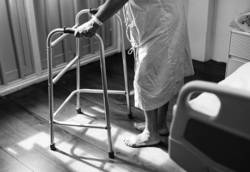Sepsis is a life-threatening condition that can be fatal for nursing home residents with compromised immune systems. Uncontrolled infections are a leading cause of death for nursing home residents in the United States. Elderly patients are at considerable risk due to their advanced age, diminished immune response, and the presence of concurrent health conditions that can facilitate a rapid decline in health. Nursing home staff and medical care providers have a duty of care to nursing home residents that includes adhering to sterilization and infection control procedures designed to prevent patients from contracting bacterial infections that can lead to sepsis.
Understanding Sepsis
Sepsis is the result of the body’s immune system response to infection. This response secretes chemicals into the bloodstream to fight the infection. In turn, this causes inflammation that can damage organs. If blood clotting occurs, this can reduce blood flow to limbs. If left untreated, the condition can result in a life-threatening drop in blood pressure, organ damage and potential organ failure, or loss of limb(s).
Sepsis can quickly progress into septic shock if it is not promptly treated. If this occurs, the individual has a significant risk of death and it is estimated that fatalities occurring as a result of septic shock are approximately 40%. Moreover, those who survive a septic shock are at elevated risk for future infections.
Those at elevated risk of developing sepsis are individuals with untreated wounds, pneumonia, urinary tract infections, or bacterial infections. Similarly, individuals with diabetes and individuals who take prescription medications that suppress immune system response are also at considerable risk. Elderly patients can contract bacterial infections via urinary catheters, surgical procedures, through IV lines, or via the development of bed sores.
Recognizing the Signs of Sepsis
Prompt recognition of the signs of sepsis is essential for protecting the life of a loved one. Symptoms of sepsis include fever, chills, low body temperature, elevated heart rate, nausea, vomiting, and diarrhea. Individuals may also exhibit a sharp change in mental faculties and the inability to urinate. Patients may also feel dizzy, faint, lose the ability to communicate effectively, and suffer severe muscle pain and breathing difficulties.
Those who receive prompt treatment via intravenous antibiotics can recover within 1-2 weeks. However, recovery times are highly variable and depend on the patient’s overall health and the presence of any other factors that can hinder the recovery.
Sepsis in Illinois Nursing Homes
It is estimated that approximately 6,000 nursing home residents in Illinoisare afflicted with sepsis each year. Roughly 1 in every 5 of these individuals succumbs to the infection. Nationwide, approximately 380,000 nursing home residents succumb to deadly infections. The overwhelming majority of these cases are preventable and result from the administration of substandard medical care including failure to adhere to established medical procedures and protocols.
In December 2018, the Centers for Medicare and Medicaid Services admonished several hundred Illinois nursing homes with low ratings over their adherence to protocols designed to prevent and control infections within elder care facilities. A considerable number of these facilities were located in Chicago and surrounding suburbs, fifteen of these facilities received CMS ratings of “F” for their failure to protect nursing home residents from serious harm and potential death.
The rates of sepsis are increasing rapidly in nursing homes throughout the country. One reason cited for the increasing prevalence of sepsis is that many nursing home facilities are chronically understaffed. It is estimated that approximately 78% of nursing home facilities in the Chicago area are understaffed. This creates a significant risk for patients because this leads to poor adherence to infection control procedures and diminished oversight.
It also means that patients don’t receive the care they need that can prevent infections and the development of bedsores that can lead to infections. In fact, roughly 60% of elder care facilities in Illinois have been cited for failing to prevent the development of bed sores. Nationwide, only three states have received more citations for this deficiency and it is significant because bed sores are a common path of infections that can lead to sepsis.
Mitigating the Risk
Family members and caregivers should closely monitor the care and medical treatments that their loved one receives. This includes regularly checking to ensure that a facility is not understaffed and that a pattern of behavior is not emerging that places their loved one at risk of serious injury or death. Family members should not hesitate to remove a patient from a facility when it is clear that their health and safety are at risk. Further, family members and their loved ones should promptly report any deficiencies in care. Many choose to obtain guidance from a nursing home abuse lawyer to pursue legal actionthat can protect the individual from further harm.


